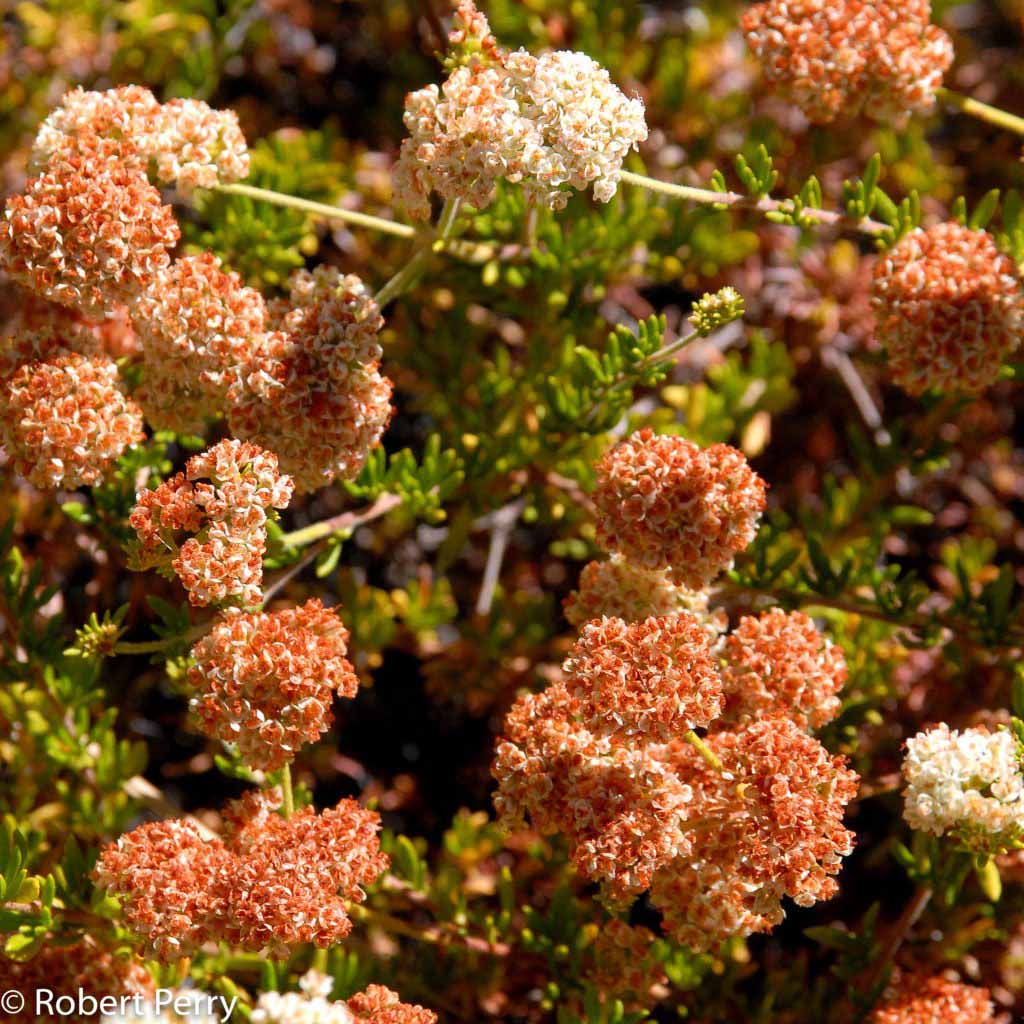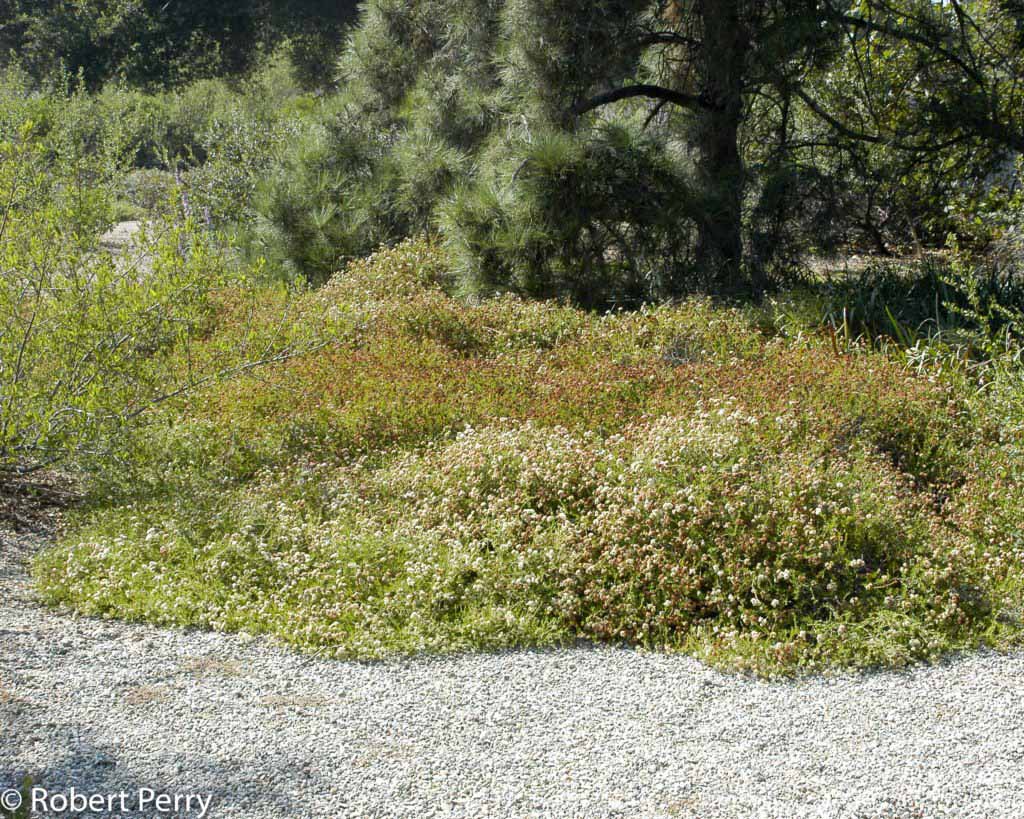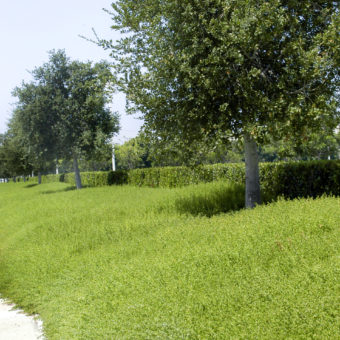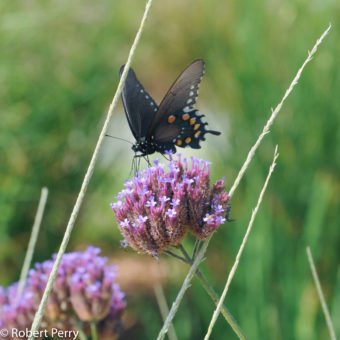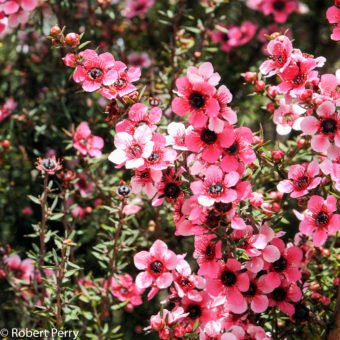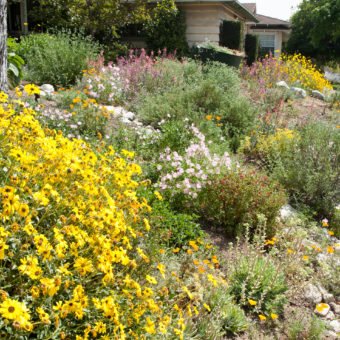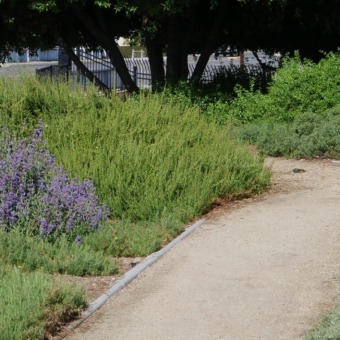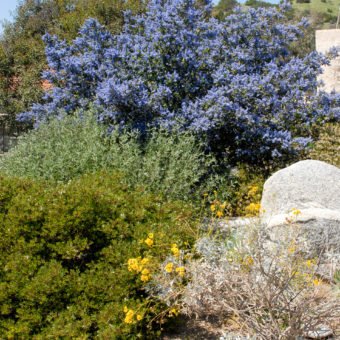The common buckwheat is one of our most common Southern California native plants across the Inland Empire. Many natural populations have been removed through urbanization, but this plant still has great value in residential gardens in wildlife plantings and among other native shrubs and perennials. The natural species grows 2-3 ft. high and 3-4 ft. across, has hard needle-like leaves and produces numerous flower head during the spring. Each flower head is covered with many small creamy white flowers that will turn reddish-brown during the summer.
Common buckwheat is a valued plant for wildlife gardens and with other sun and drought tolerant native plants. It is good for stabilizing slopes and banks and in mass or feature plantings around boulders and pathways. It grows best in warm, sunny locations and with low amounts of supplemental water. Several cultivars can be found in nurseries including: E. f. ‘Theodore Payne’ that is a prostrate plant 1-2 ft. tall and spreading 8-10 wide, and E. f. ‘Warriner Lytle’ is a coarse and robust selection that can reach 4 ft. tall.
